The Chinese Jade at the Worcester Art Museum, its worth seeing
Located in Worcester Massachusetts and opened in 1898 the Worcester Art Museum aka WAM today houses a collection of over 35,000 objects ranging from ancient antiquity's to modern art. If
you live in New England, you might be surprised to learn the Worcester Art Museum is also the second largest museum in New England. The largest is the Museum of Fine Arts in Boston. If you've never taken the time to go there for a day, you should. If you collect or have an interest in fine Asian jades, you definitely should. The Chinese jade at the Worcester Art Museum is an experience and well worth the time to visit this gem of a museum. The jades shown here were part of an exhibit done several years ago, happily most are on permanent display today.
While the museum's collection of jades is not the largest in the world, the institution has a good number of truly superb examples donated by several generous benefactors over the museum's 115 year history. Of the gifts those from Worcester County industrialist, Harry W. Goddard, (1863–1927) and Maria and John Dirlam, Mr Dirlam is the president J.I. Morris Co., in Southbridge, Massachusetts are stand outs. Hats off to both of them! Many examples in the collection are from the Qianlong (1735-1795) period which many collectors view as the high point in the history of Chinese jade carvings.
In addition to a fascination in jades, Harry Goddard also has a strong affinity and appreciation for finely carved Chinese hard-stones and coral. Mr. Dirham began his love affair with jade and collecting following a trip to Hong Kong during the 1960's. A few years later he undertook building a significant collection, much of which has sine been generously donated or loaned to the WAM. Having benefactors is always nice, having benefactors with the keen eyes of these two gentlemen is even better.
__________________________________________________________________________
 __________________________________________________________________________
__________________________________________________________________________
NOTE: The Museum description cards and object images below are all enlargeable.
18th C. Carved Carnelian
Among them is this superb 18th C. Qianlong Dynasty Imperial workshop carved russet carnelian triple vase with magnolia, magpie, peonyand phoenix. Measuring just over 5.5" tall, the piece is a masterpiece of Chinese lapidary. (Goddard Gift)
A Qianlong "Ku" form ritual vase, based on an archaic bronze form.
Carved from a fine block or pale greyish-green nephrite and measuring 7.5" tall, embellished with low relief bats toatie masks and characters. (Dirlam Gift)
18th C. Qing Dynasty Triple Brush Washer
Carved from fine pale green nephrite depicting three peonies with fully articulated leaves. The brush washer measures 9" long. (Dirlam Gift)
A fine Qinlong Period Dynasty Table Screen
A superbly carved mountain and figural landscape screen worked from a pale green nephrite slab. (Dirlam Gift)


A Fine 17th C. late Ming Dynasty Striding or Walking Bixie,
Carved from striated pale green and russet nephrite this classical form was first seen during the Han dynasty, the Bixie measures 6" in length.
An 18th C. (probably Qianlong Period) "Ding" form Incense Burner
Superbly carved and polished from yellowish white nephrite, the lid surmounted with a Foo lion and the body flanked by two high relief carved dragon masks with ring handles and supported by three mask form feet. (Goddard Gift)
An 18th C. (probably Qianlong Period) Relief Carved Circular Jade Table Screen
A superbly carved spinach green nephrite jade screen depicting classical scene of scholar's on a rocky outcropping above lapping waves peering across to a studio. (Dirlam Gift)
An 18th C. (probably Qianlong Period) Carved Incense Burner
A small delicately carved white nephrite incense burner with square canted sides flanked with lion mask and ring handles , surmounted by a stepped and curved lid topped by a Foo Lion. The burner is supported by four column form feet. Carved on all sides with low relief elements. (Goddard Gift)
Chinese Jade at the Worcester Art Museum , a folio of more jade and carvings from the collection.
For ease of Navigation, RIGHT click and open in a NEW Tab
- 200 BC to 200 AD Nephrite Figural Pendant
- det, 200 BC to 200 AD Nephrite Figural Pendant
- Late 20th C. Spinach Green Jade Ruyi Scepter
- det, Late 20th C. Spinach Green Jade Ruyi Scepter
- Late Ming Nephrite Cup with Dragons
- det, Late Ming Nephrite Cup with Dragons
- 19 to 20th C. Jadeite Ruyi Scepter
- det, 19 to 20th C. Jadeite Ruyi Scepter
- 18th C. Nephrite Scholar Figure
- det, 18th C. Nephrite Scholar Figure
- 19th C. Nephrite Incense Burner
- det, 19th C. Nephrite Incense Burner
- 18th C. Nephrite Water Coupe
- det, 18th C. Nephrite Water Coupe
- 18th C. Nephrite Water Buffalo
- det, 18th C. Nephrite Water Buffalo
- 19th C. jadeite Vase with Chains
- det, 19th C. jadeite Vase with Chains
- 20th C. Jadeite Screen
- det, 20th C. Jadeite Screen
- Qing dynasty Carved Jade Lotus Cup
- det, Qing dynasty Carved Jade Lotus Cup
- 200 BC to 200 AD Carved Jade Mythical Animal
- det, 200 BC to 200 AD Carved Jade Mythical Animal
- 200 BC to 500 AD jade Bixie
- 200 BC to 500 AD jade Bixie
- 200 BC to 500 AD jade Bixie
- det, 200 BC to 500 AD jade Bixie
- 20th C. Nephrite Tripod Incense Burner
- det, 20th C. Nephrite Tripod Incense Burner
- Large 20th C. Spinach jade Dragon basin
- det, Large 20th C. Spinach jade Dragon basin
- large 3rd C. Carved jade BI
- det, large 3rd C. Carved jade BI
- 18th Spinach Green Nephrite Incense Burner
- det, 18th Spinach Green Nephrite Incense Burner
- Ming- early Qing Jade Animal Figural Grouping
- det, Ming- early Qing Jade Animal Figural Grouping
- 20th C. Carved Nephrite Guanyin
- 20th C. Carved Nephrite Guanyin
- Early to Mid 18th C. jade Guanyin Figure
- det, Early to Mid 18th C. jade Guanyin Figure
- Early 19th C. Carved Jade Moon Flask
- det, Early 19th C. Carved Jade Moon Flask
- 18th C. Carved jade Female Figure
- det, 18th C. Carved jade Female Figure
- 3rd to 6th C. Carved Female Bear Figure
- detail, 3rd to 6th C. Carved Female Bear Figure
- 5th to 4th Nephrite Dragon Pendant
- detail, 5th to 4th Nephrite Dragon Pendant
- Jade Dragon Belt Hook, Qing Dynasty
- detail, Jade Dragon Belt Hook, Qing Dynasty
- Carved Qianlong Period Jade Fish
- Detail, Carved Qianlong Period Jade Fish
- Eastern Zhou Jade Bi
- Detail, Eastern Zhou Jade Bi
- 5th C. BCE Nephrite Disk
- DETAIL, 5th C. BCE Nephrite Disk
- 20th C. Nephrite Statue with Birds, Deer and Pine Tree
- DETAIL, 20th C. Nephrite Statue with Birds, Deer and Pine Tree
- 18th C. Carved Agate Censer
- DETAIL, 18th C. Carved Agate Censer
- Nephrite Qianlong Lohan with Staff
- DETAIL, Nephrite Qianlong Lohan with Staff
- 20th C. Jadeite Lohan Figure
- DETAIL, 20th C. Jadeite Lohan Figure
- 19-20th C. Jade Brush washer
- DETAIL, 19-20th C. Jade Brush washer
- Jade Lotus pod Brush Washer
- Jade Lotus pod Brush Washer detail
- Kangxi Spinach Green Jade Brush Pot
- Carved Kangxi Jade Brush Pot
- Qianlong Double Gourd Jade Box
- Qianlong Double Gourd Jade Box detail
- Qing Jade Carved Boulder with Deer
- Qing Jade Carved Boulder
- 18th C. Qianlong jade vase detail
- 18th C. Qianlong jade vase
- Carved Jade Boulder
- det, Carved Jade Boulder















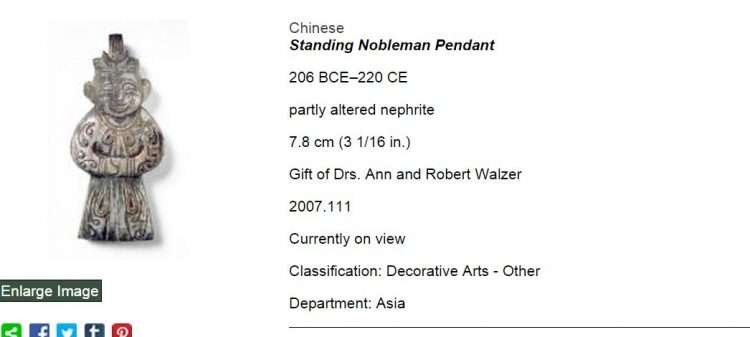
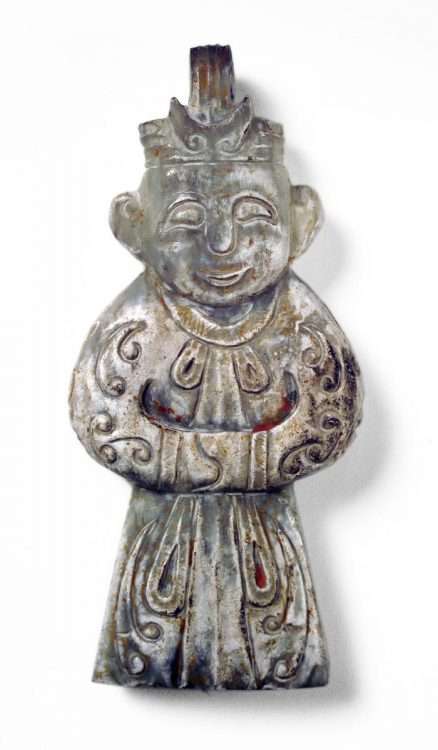
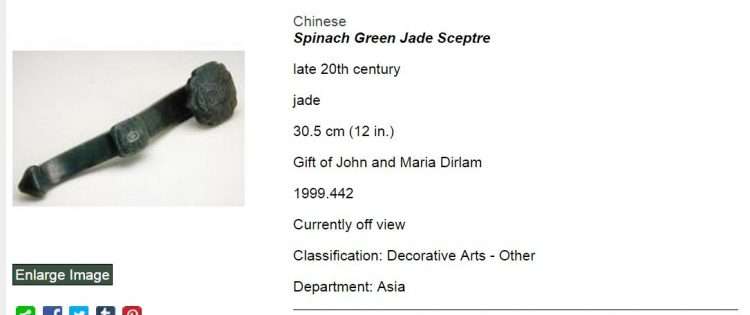
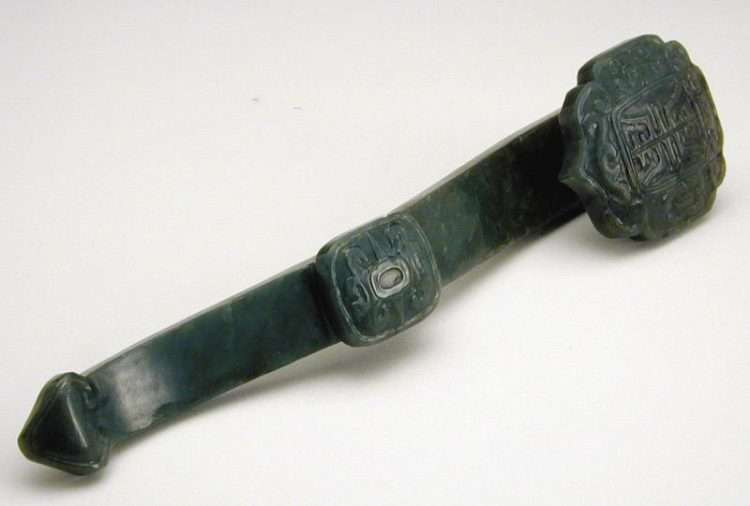
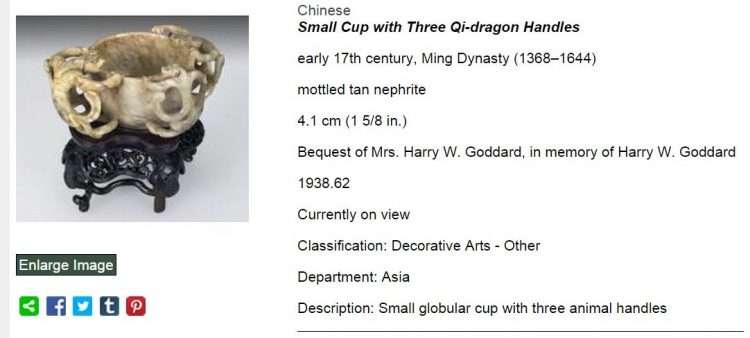
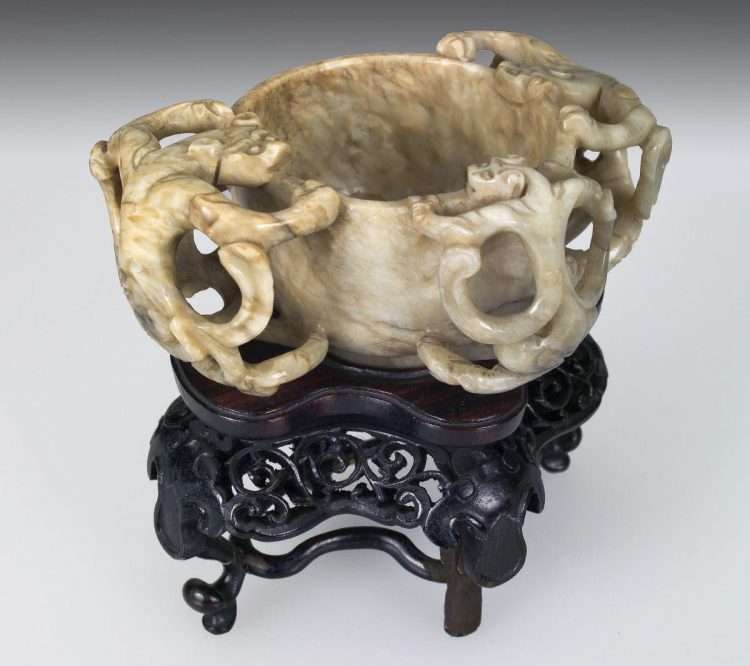
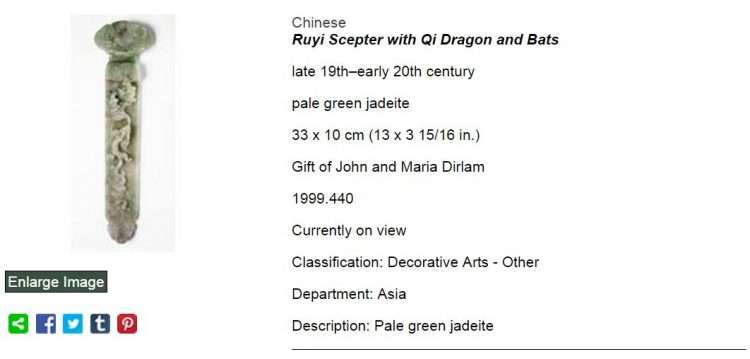
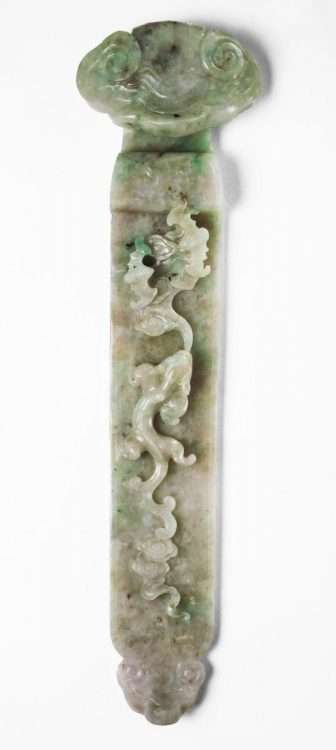
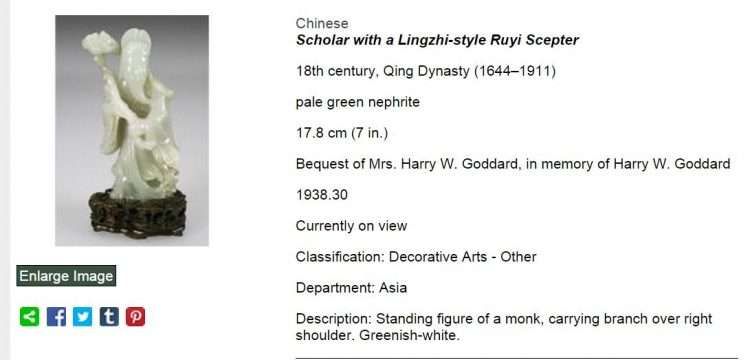
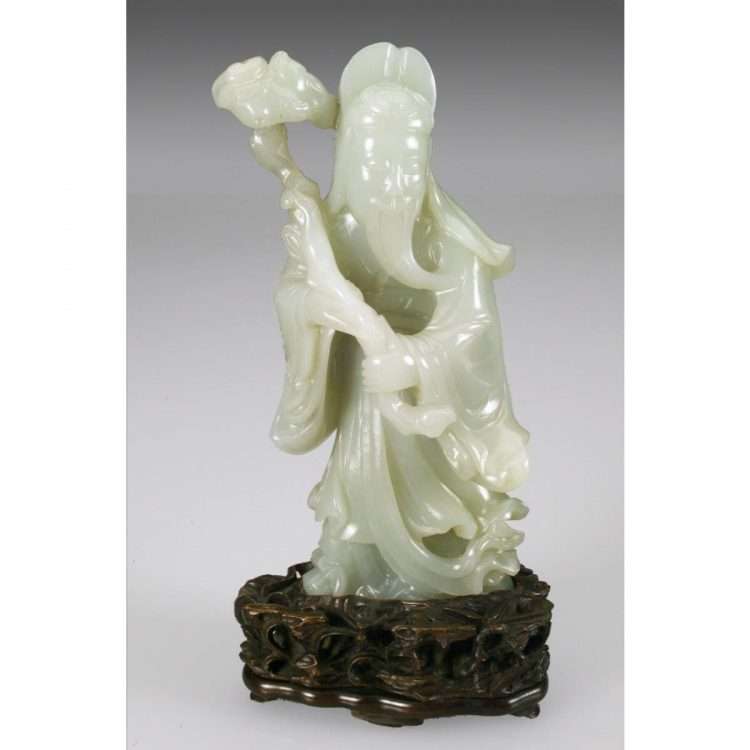
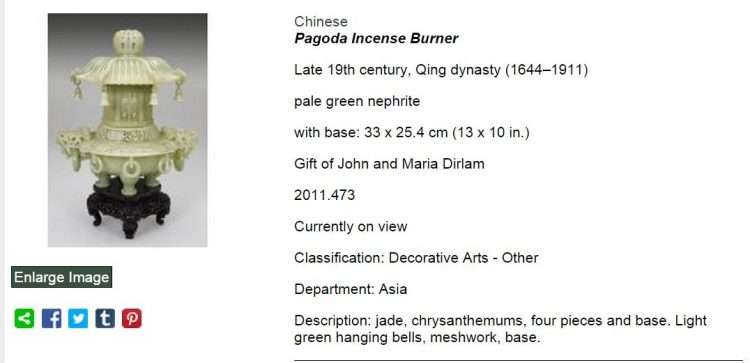
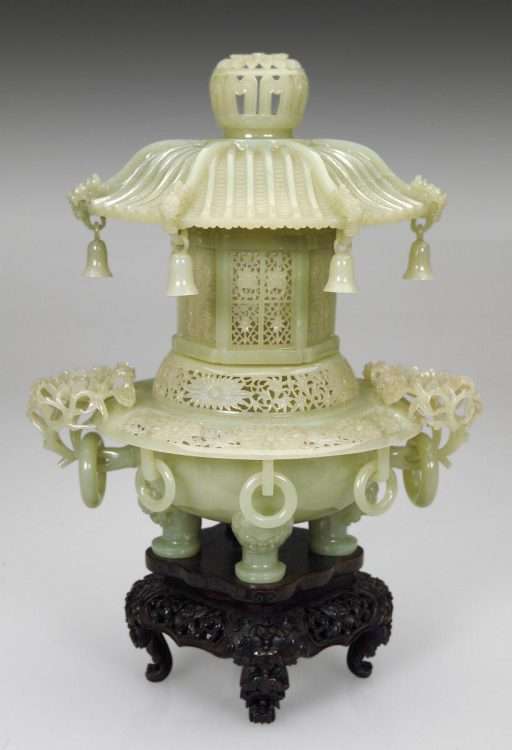
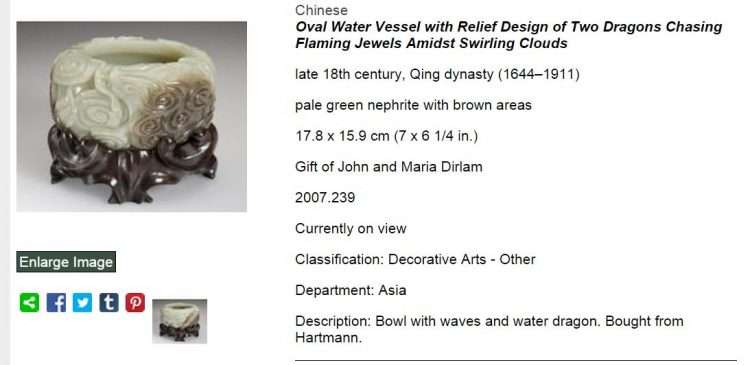
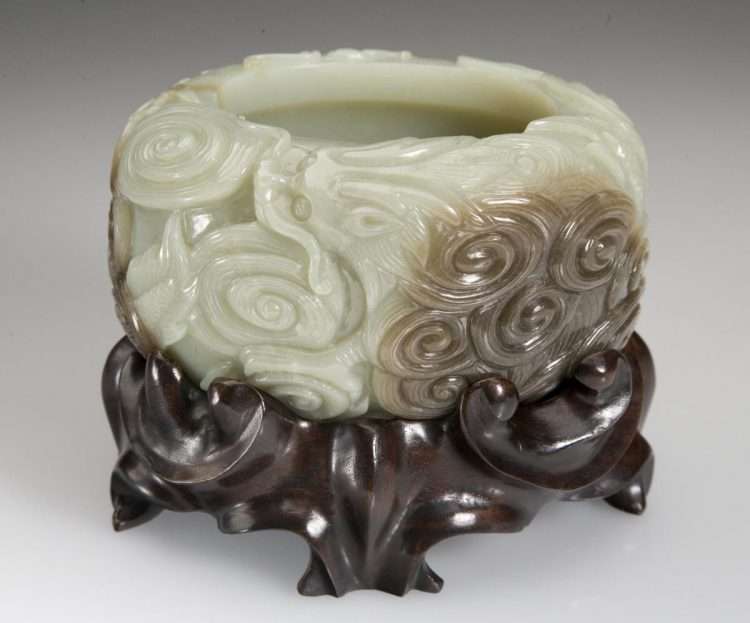
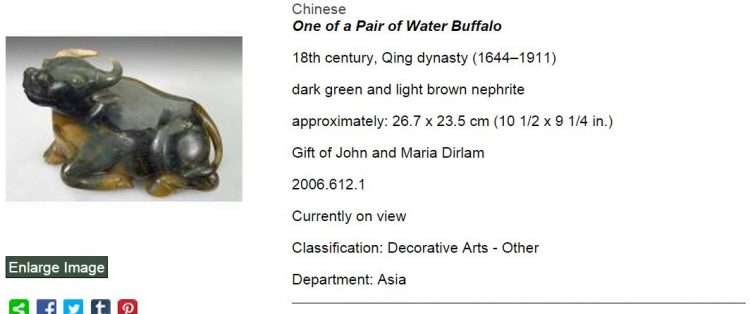
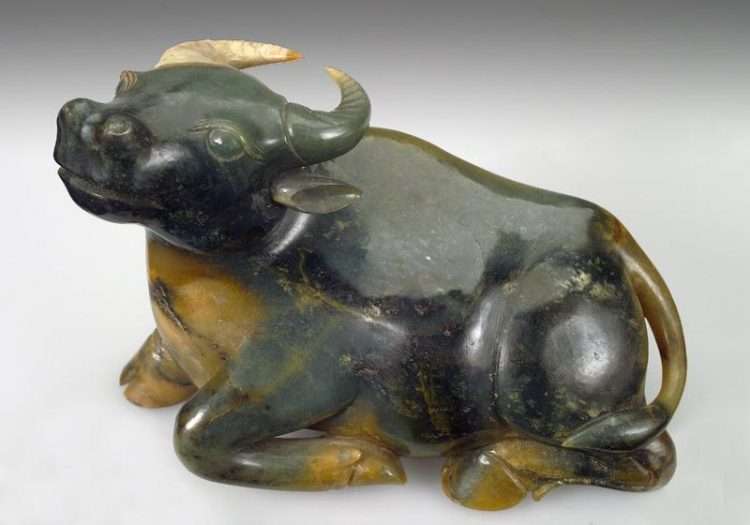
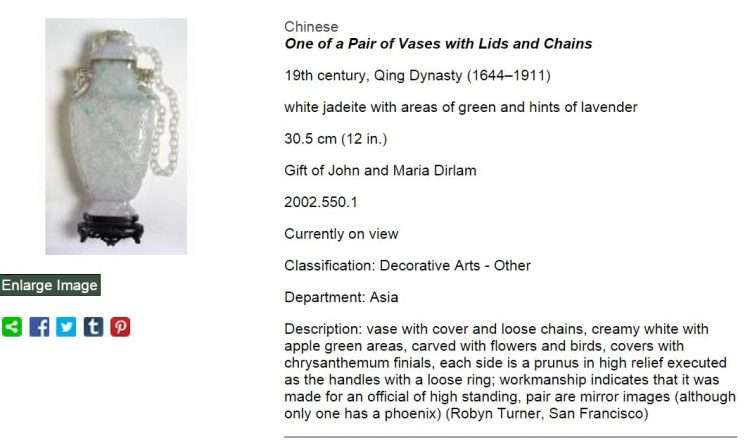
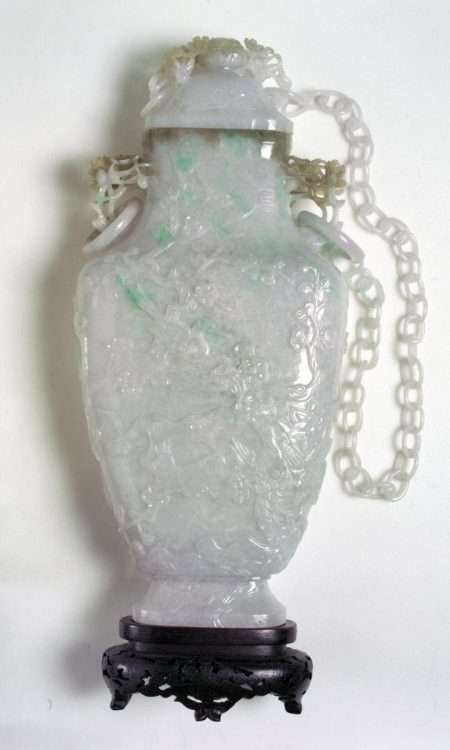
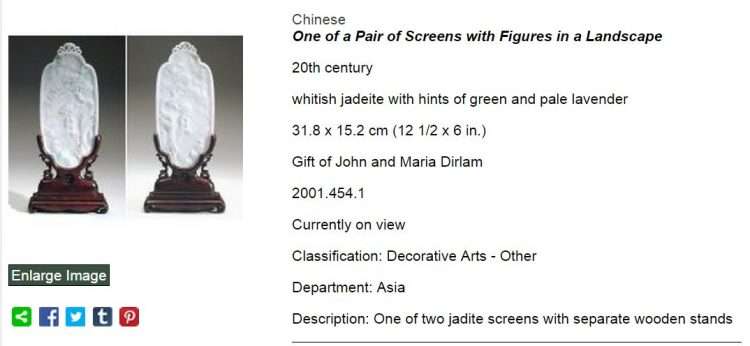

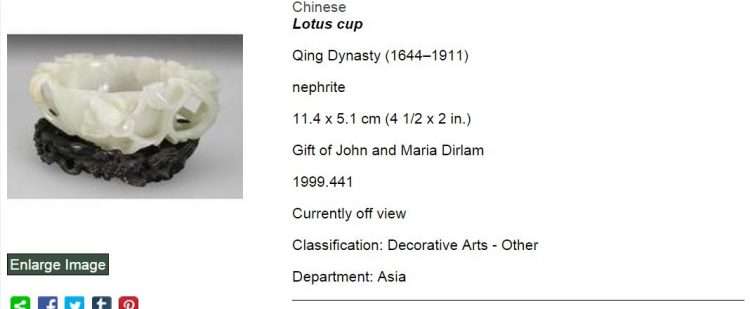
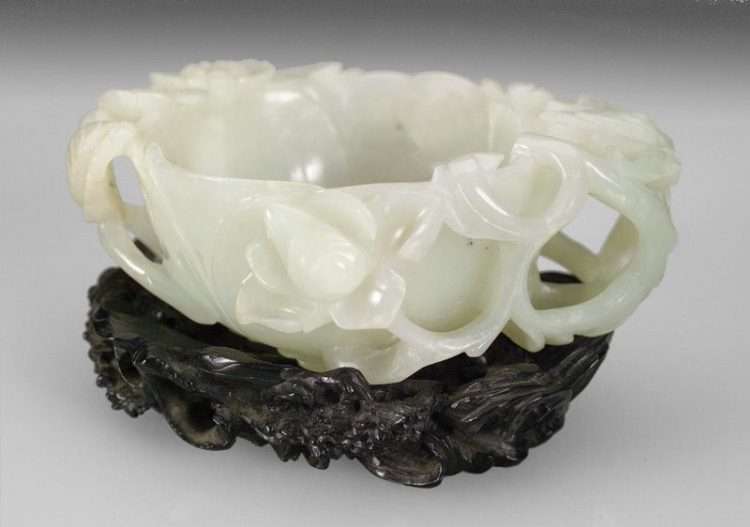
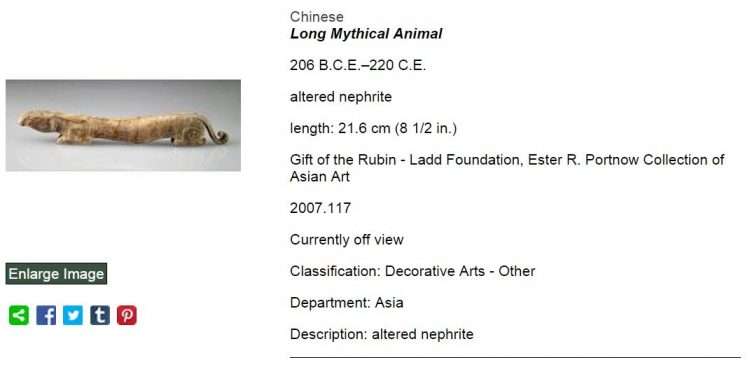
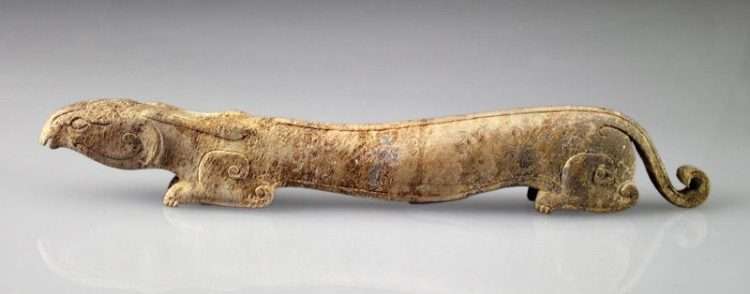
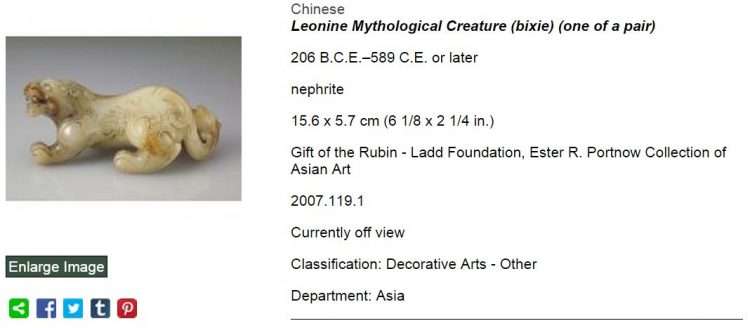
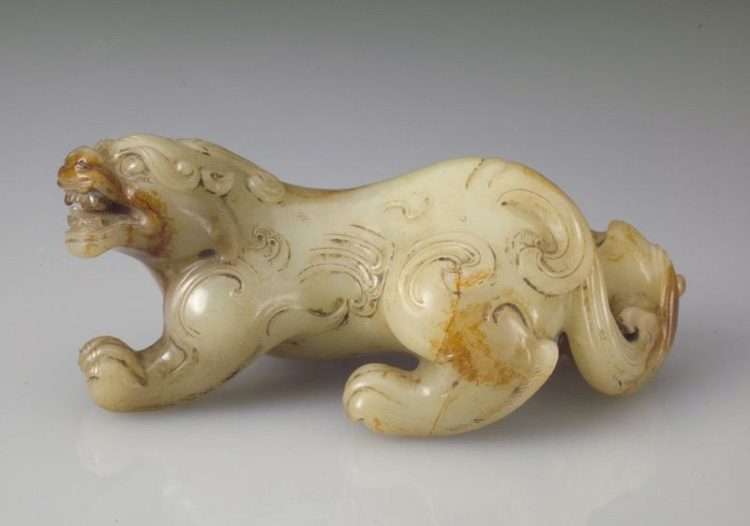
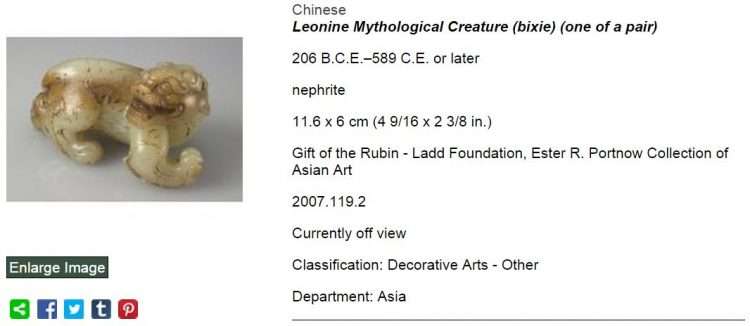
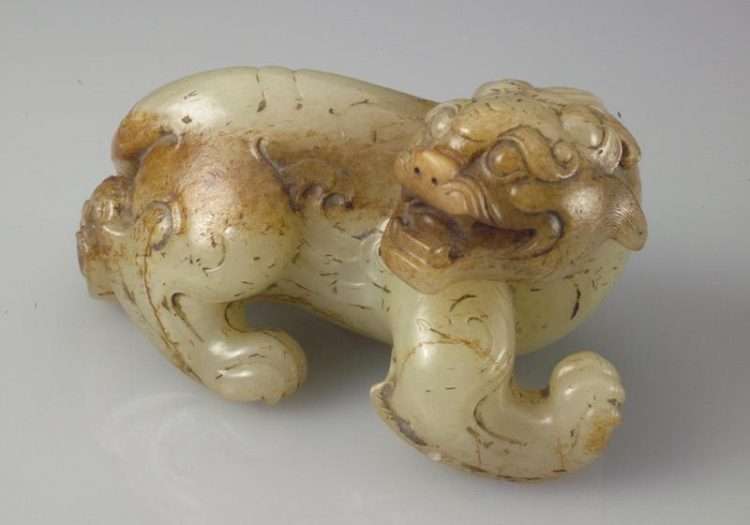
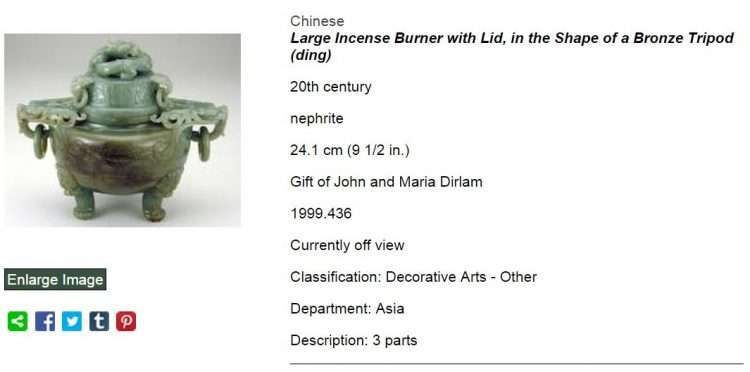
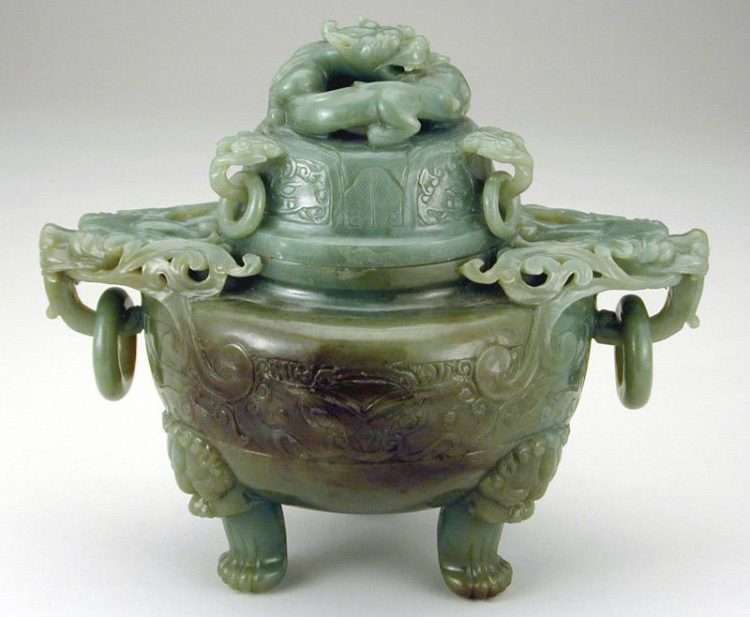
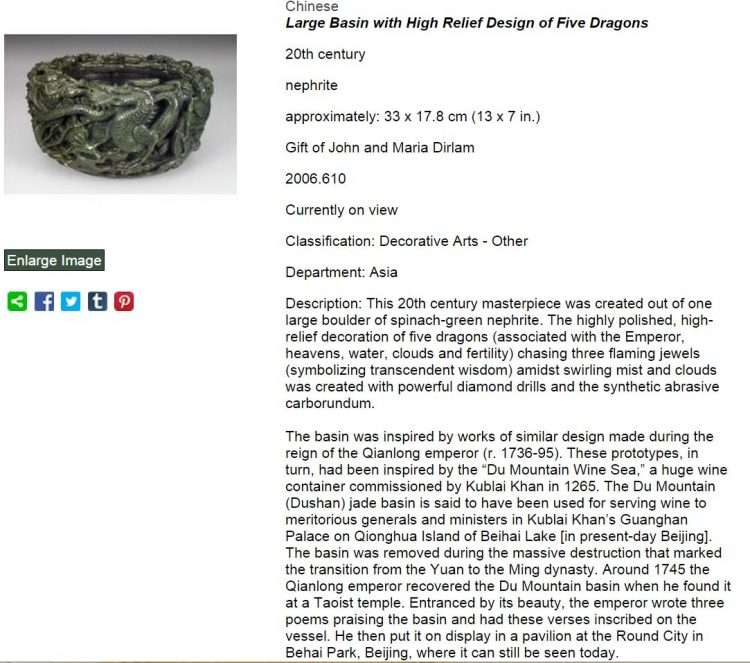
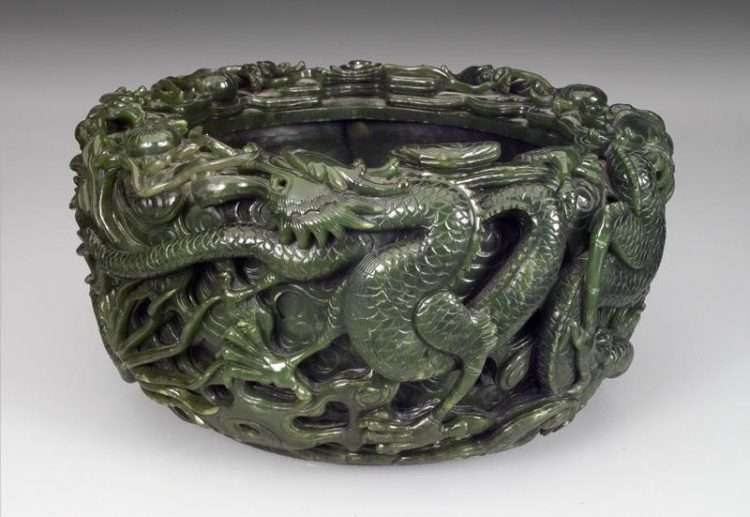
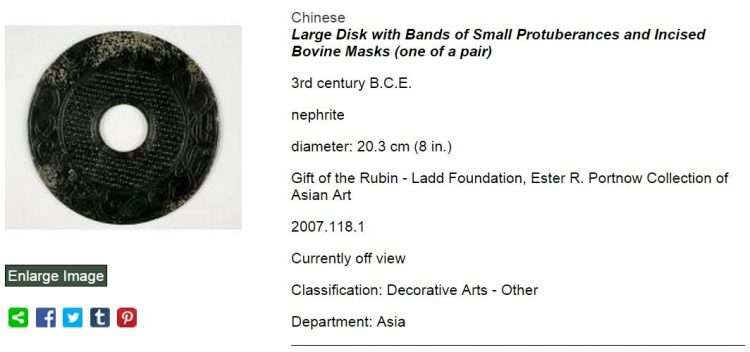
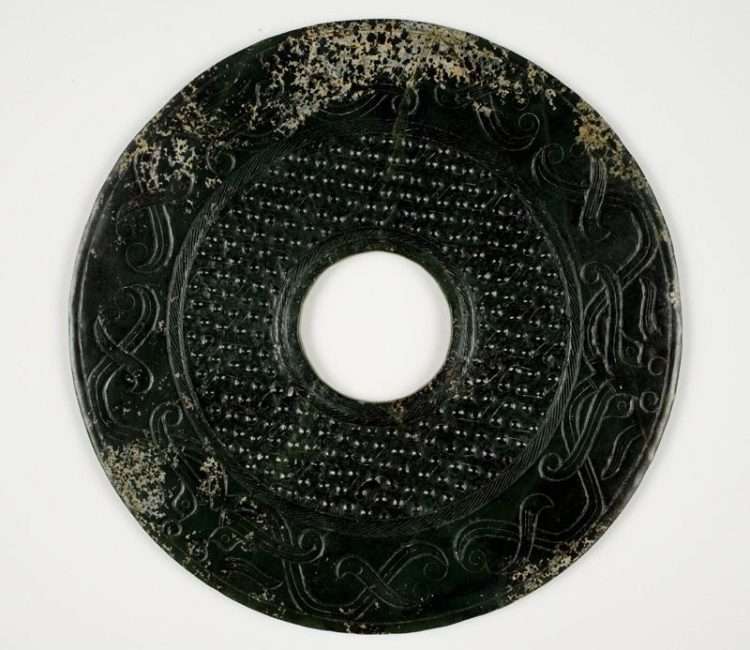
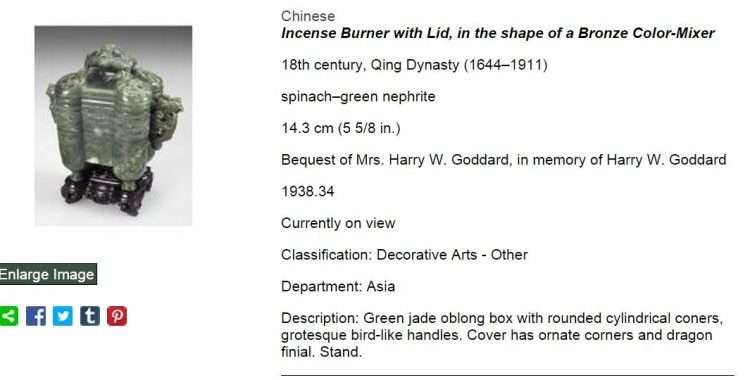
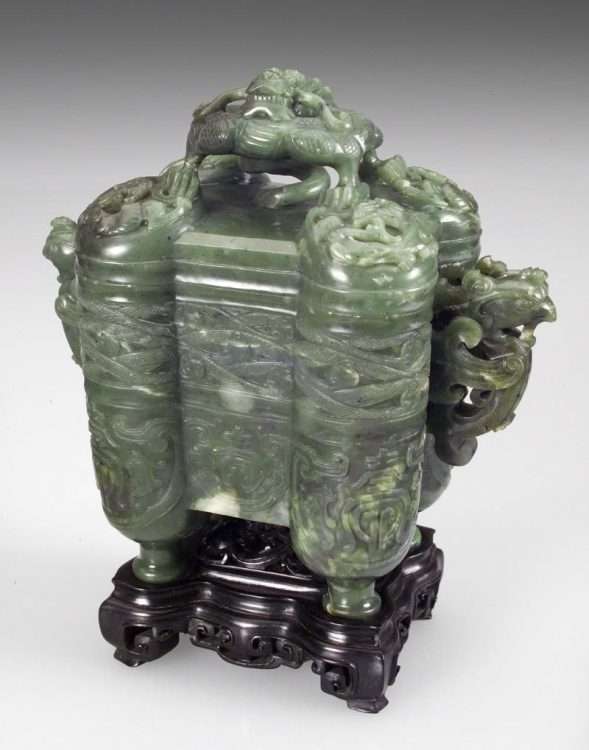
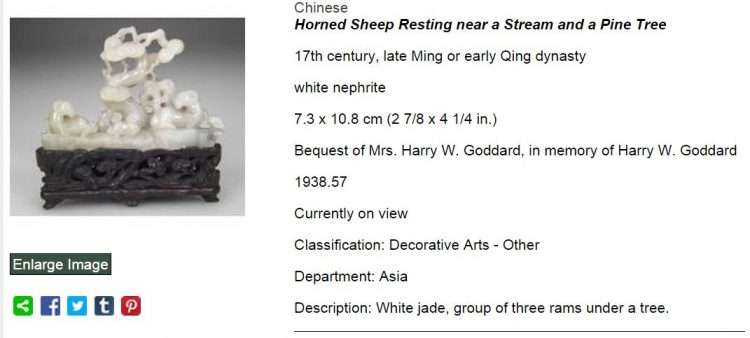
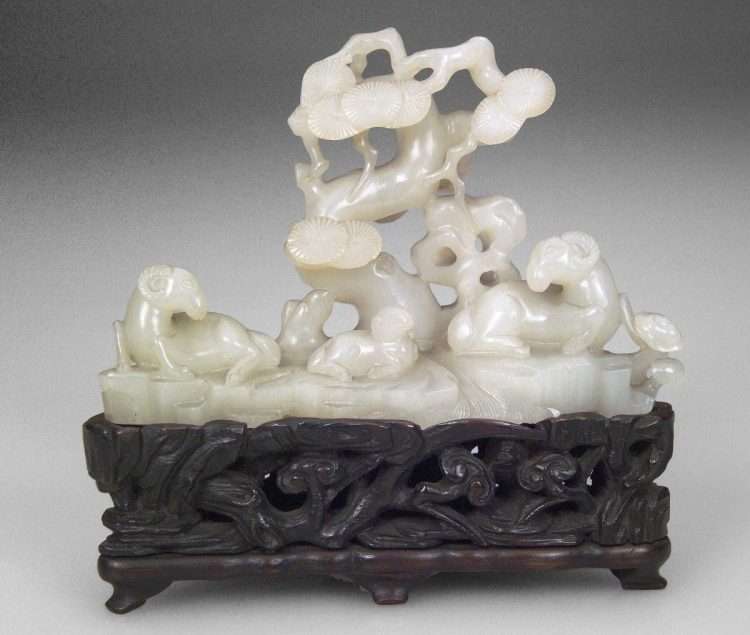

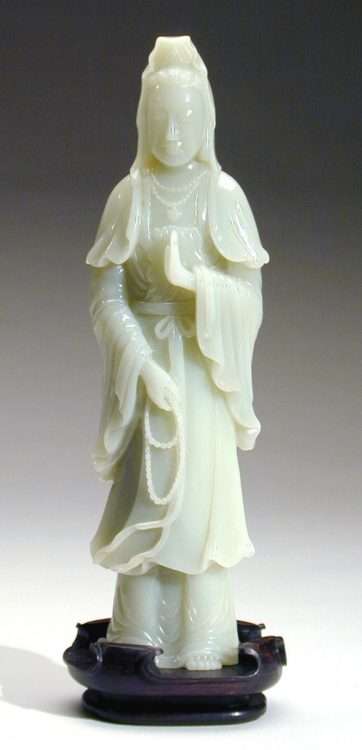
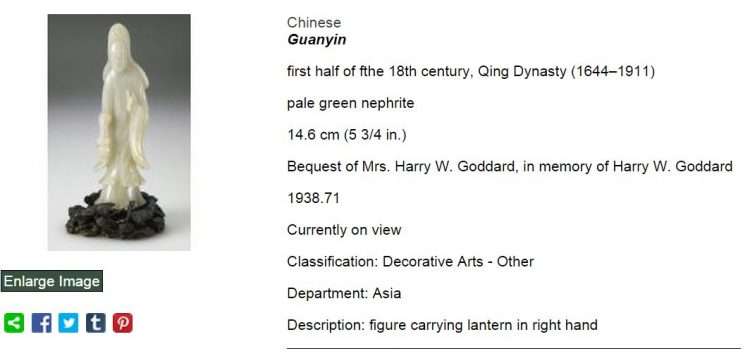
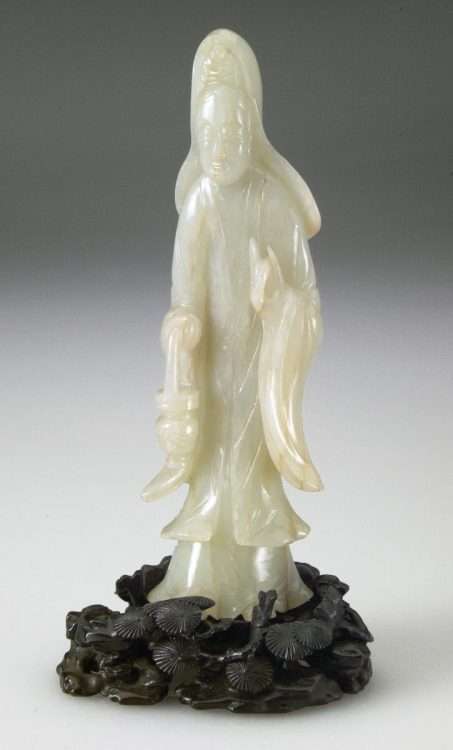
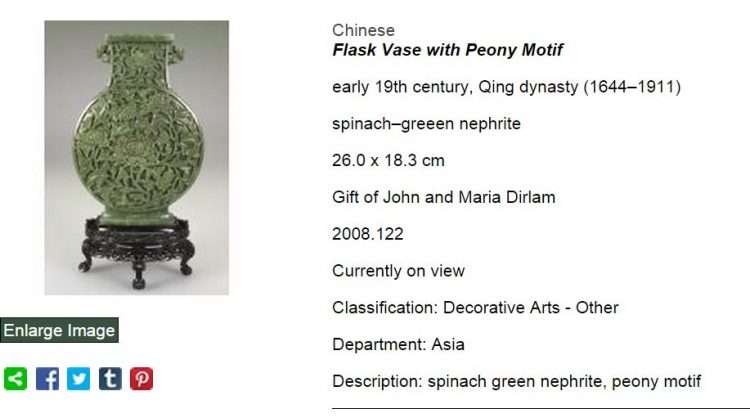
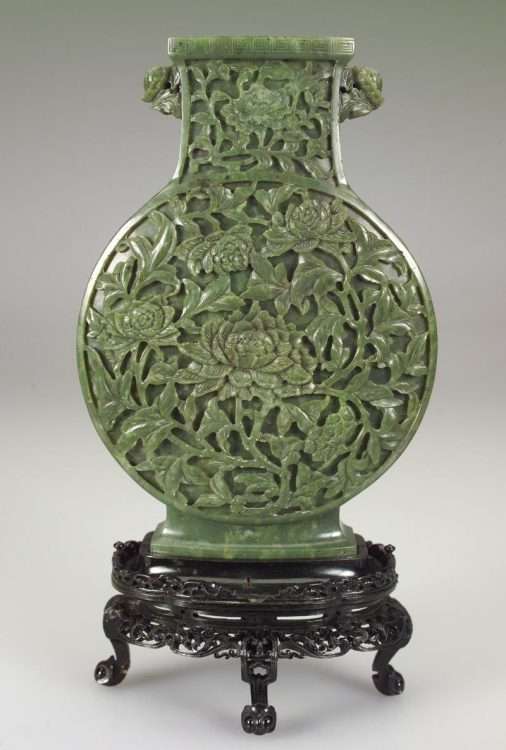
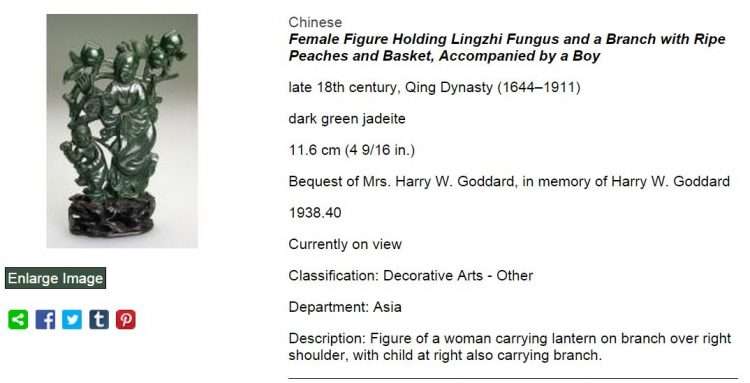
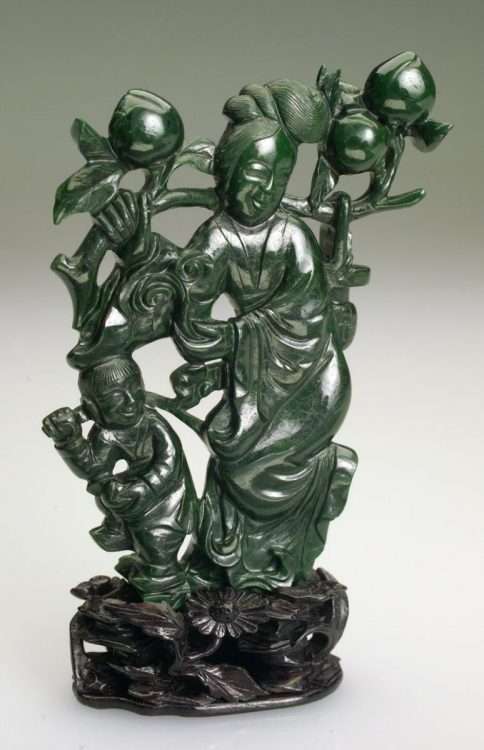
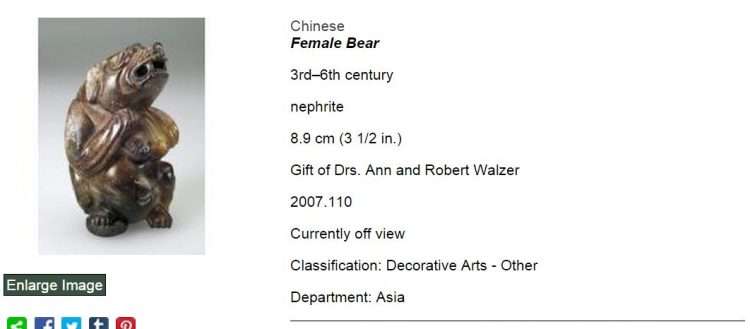
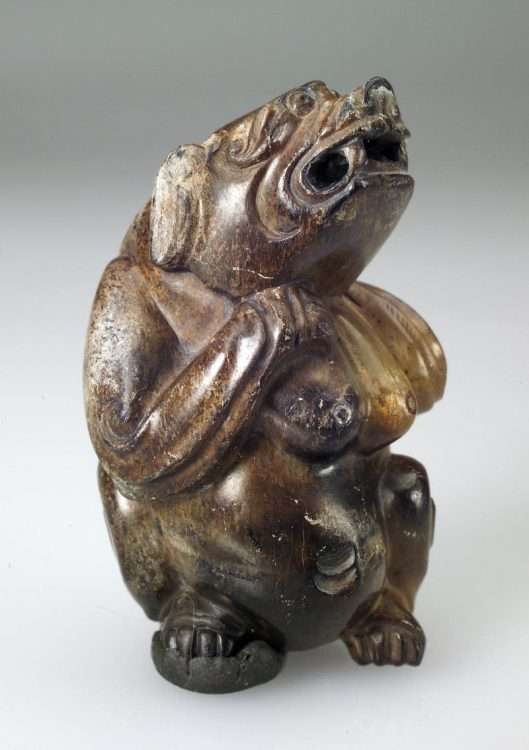
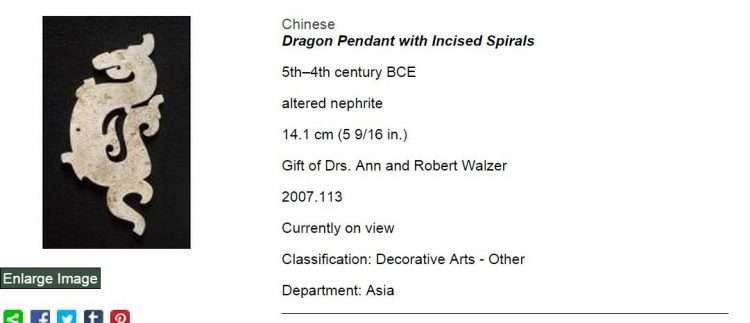
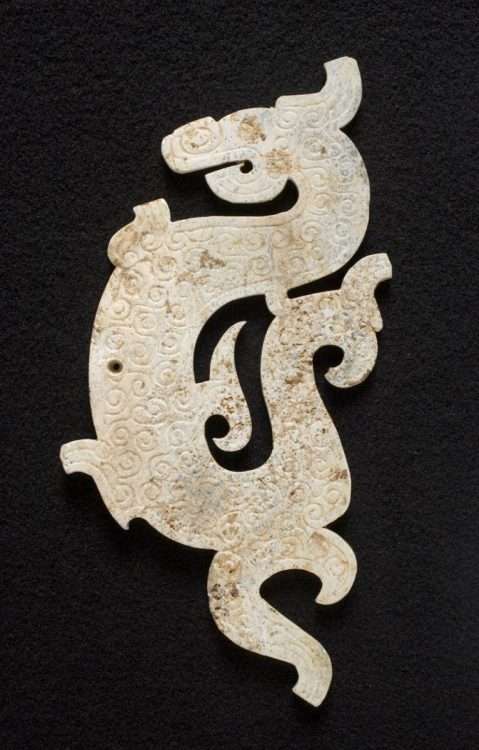
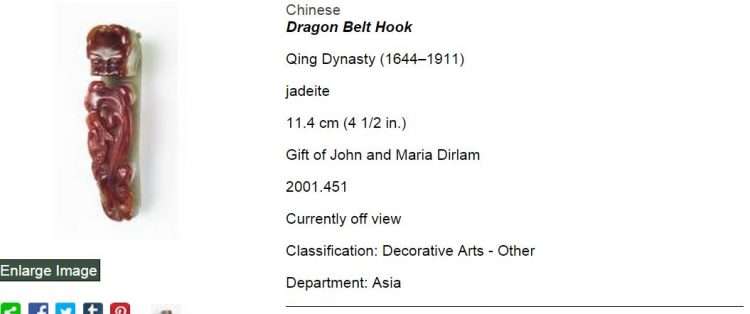
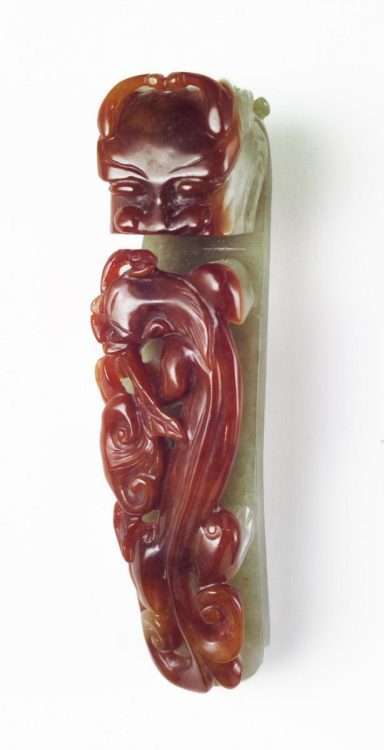
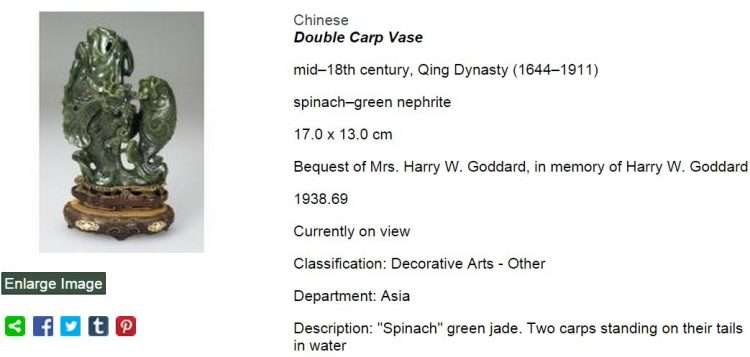
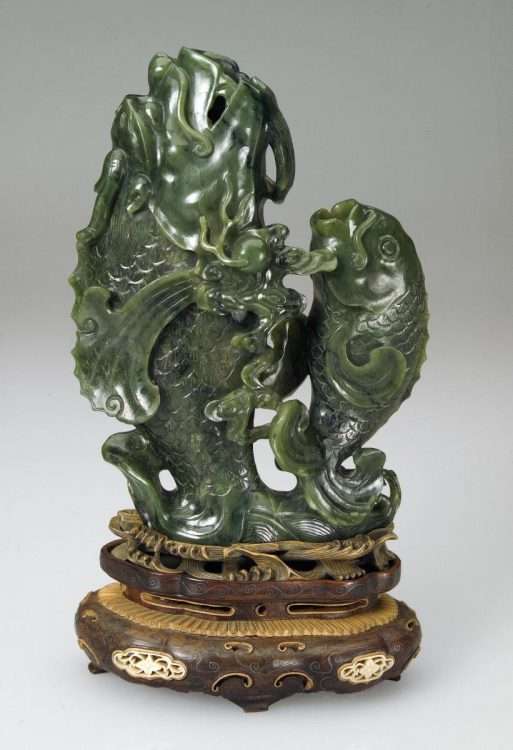
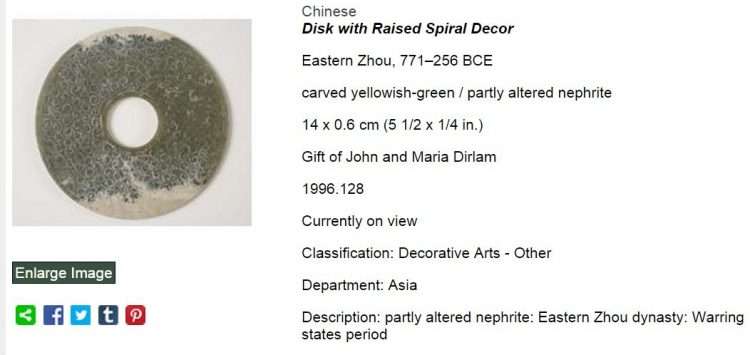
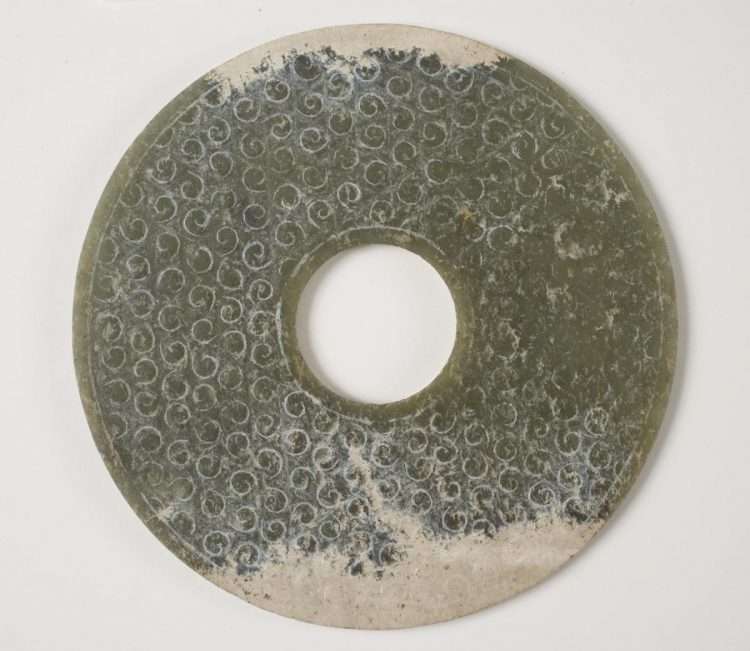
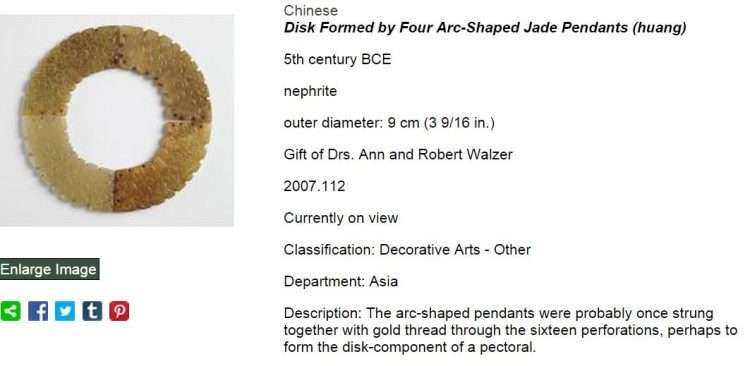
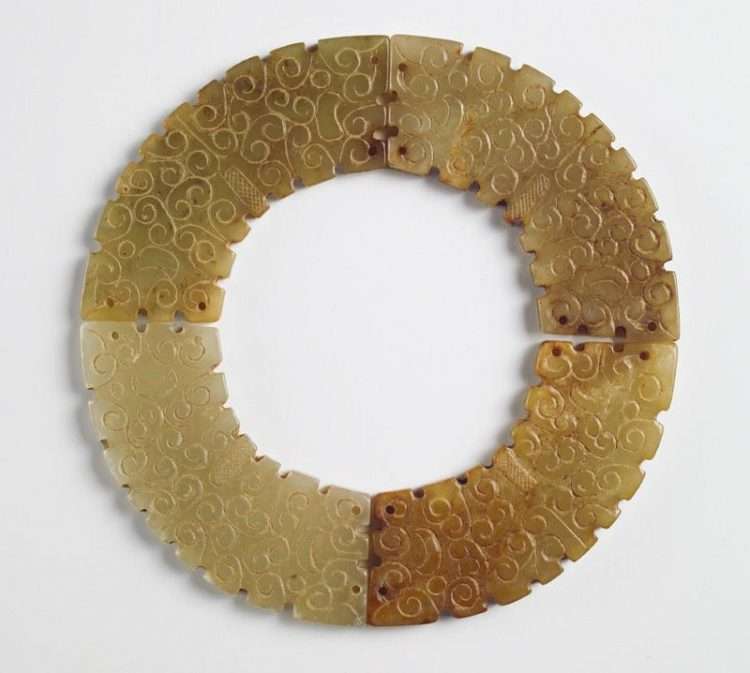
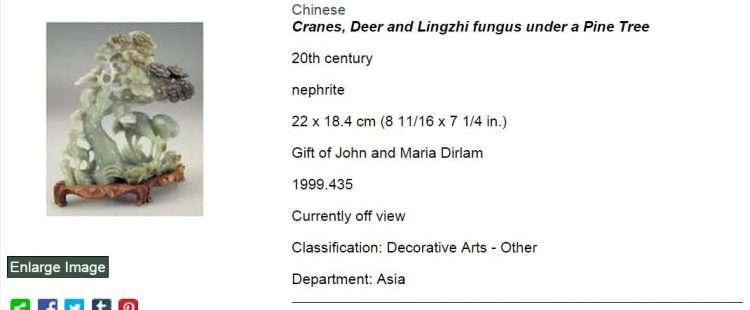
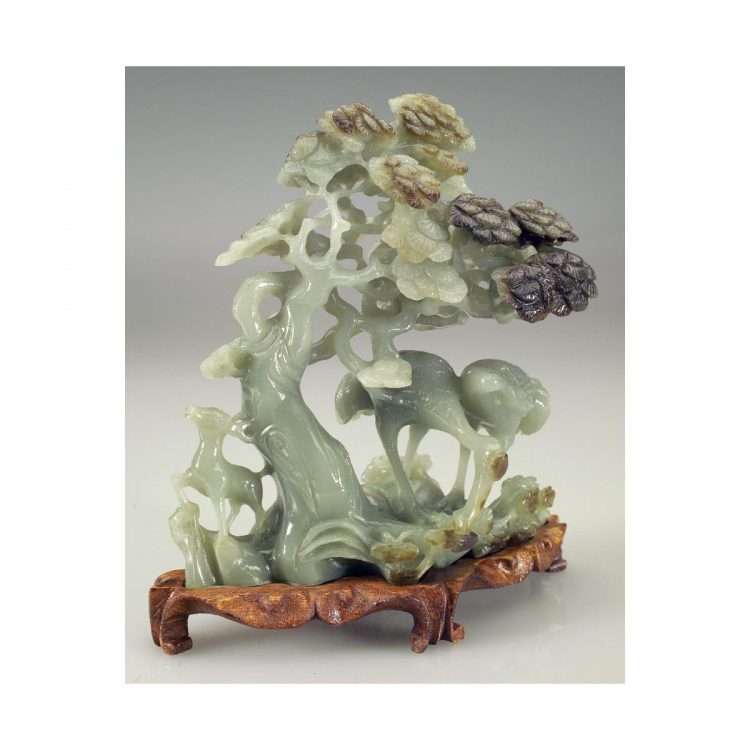
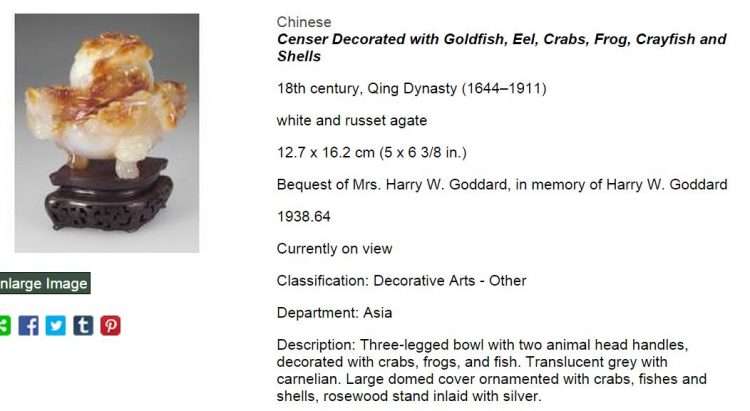
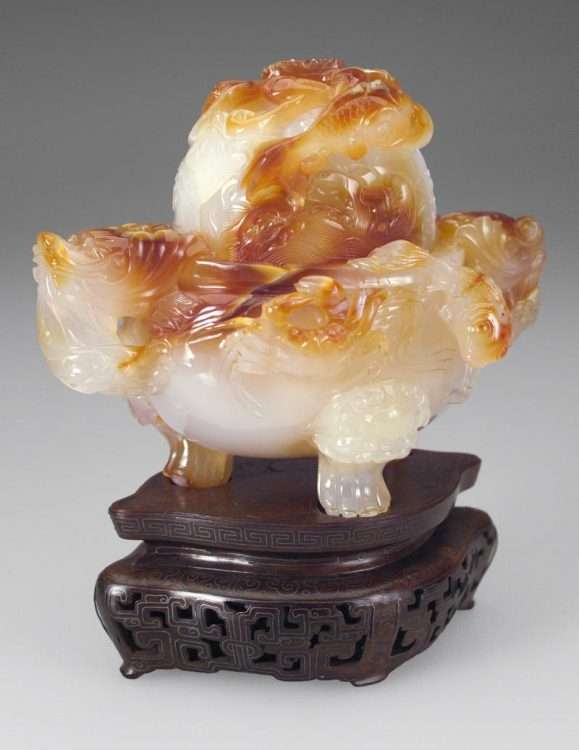
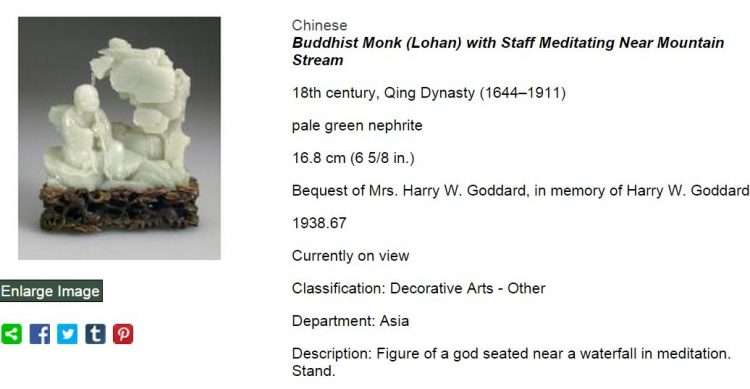
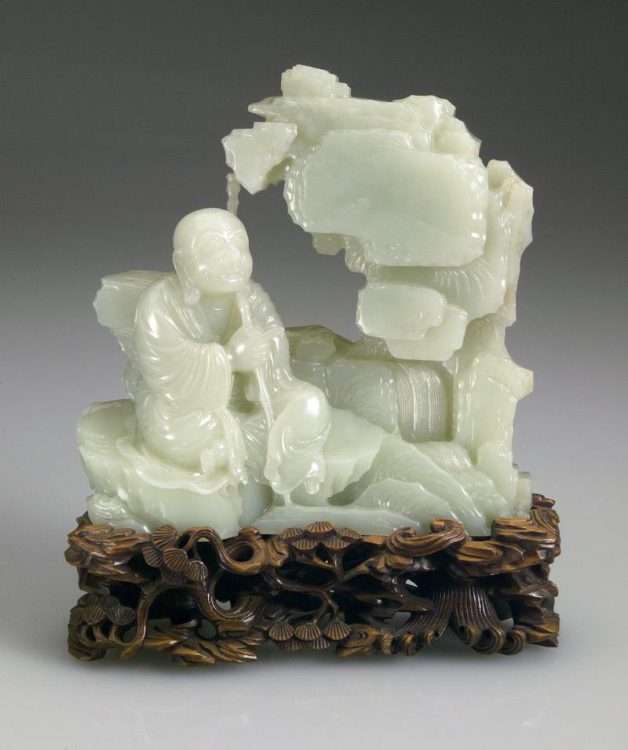
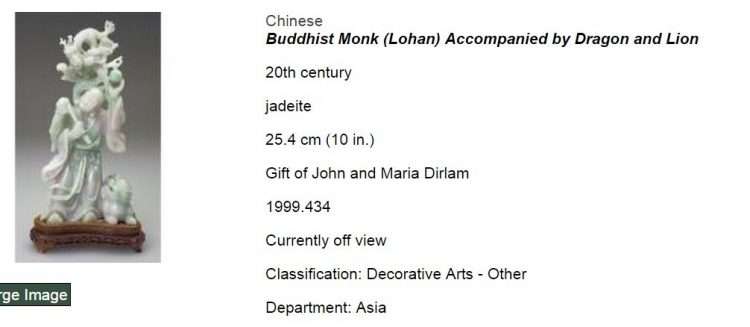
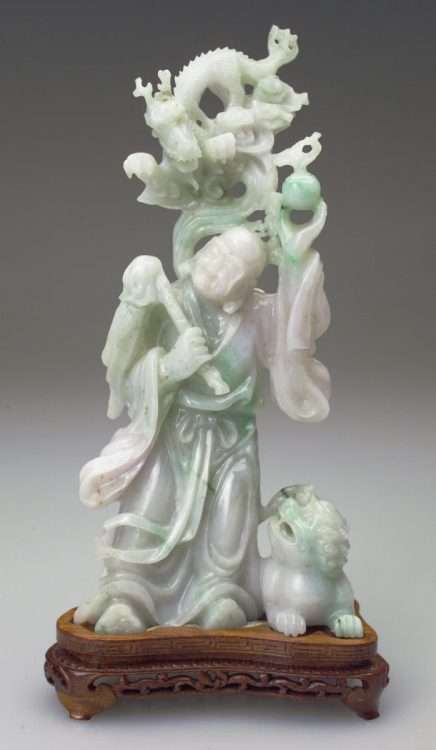
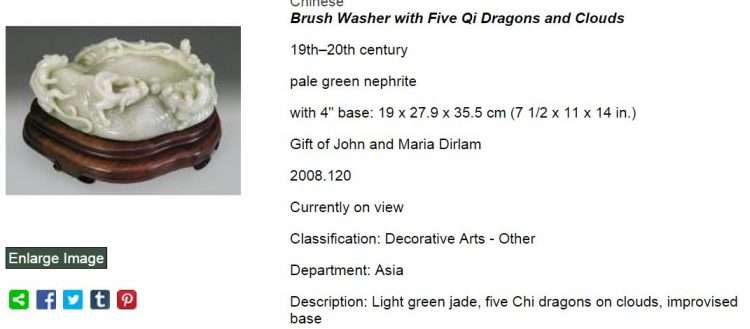
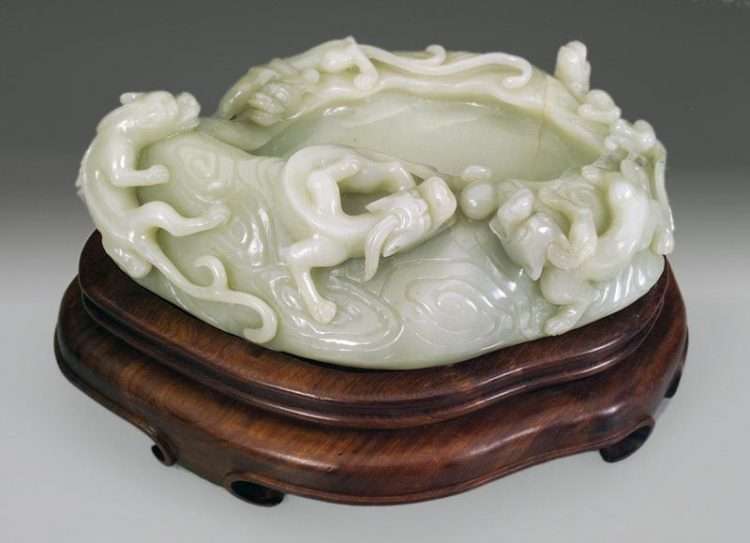
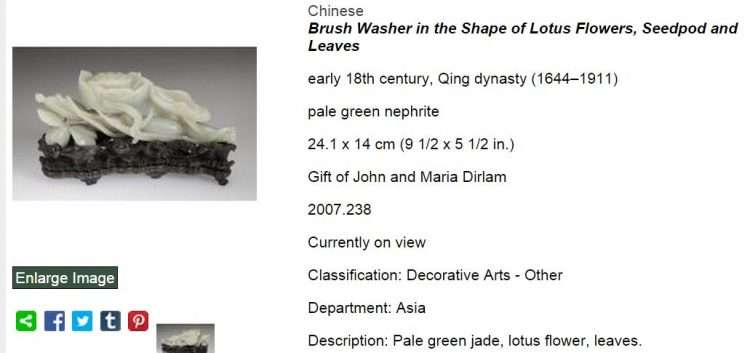
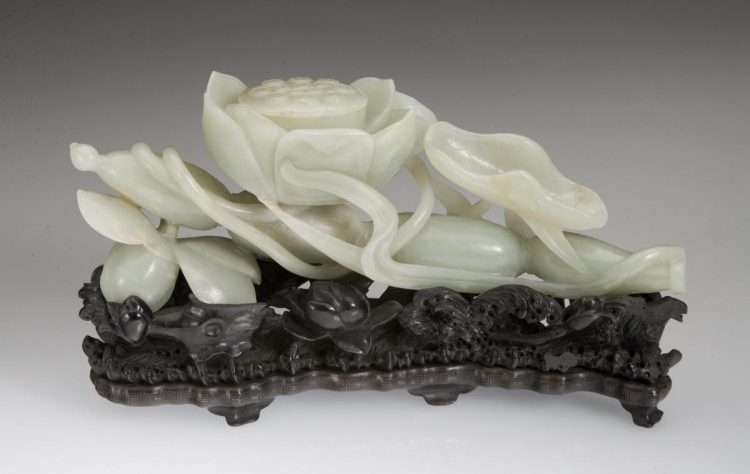
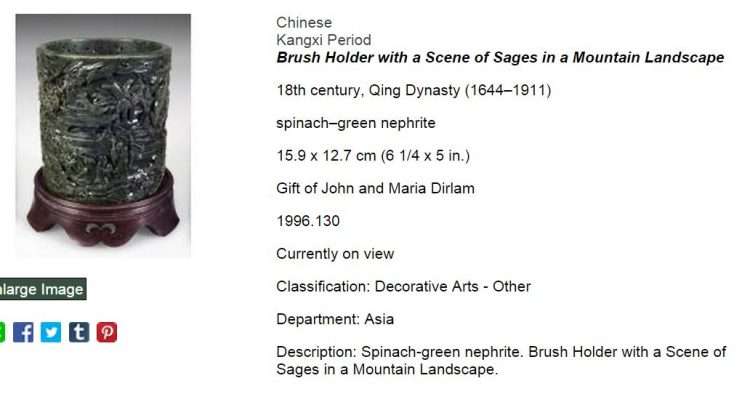
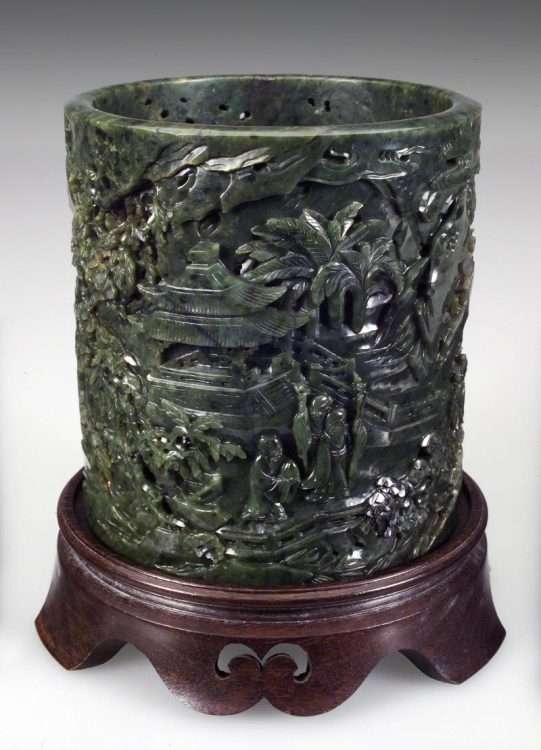
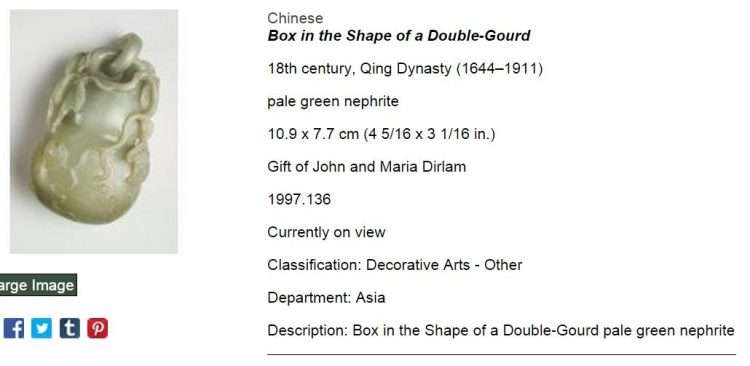
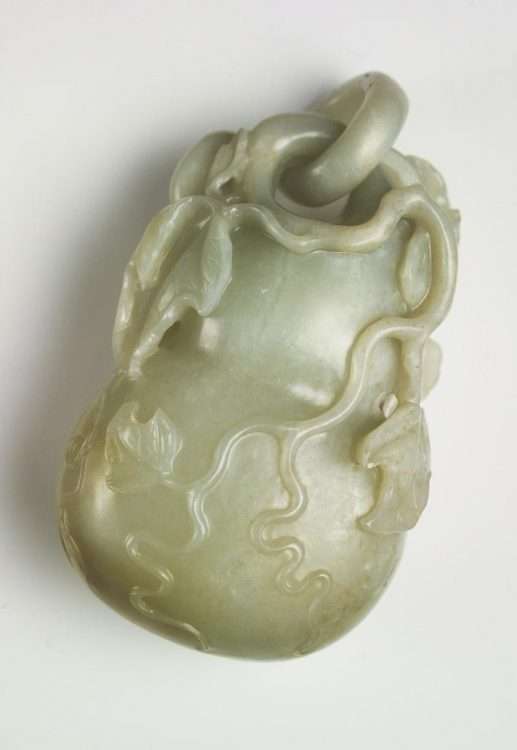
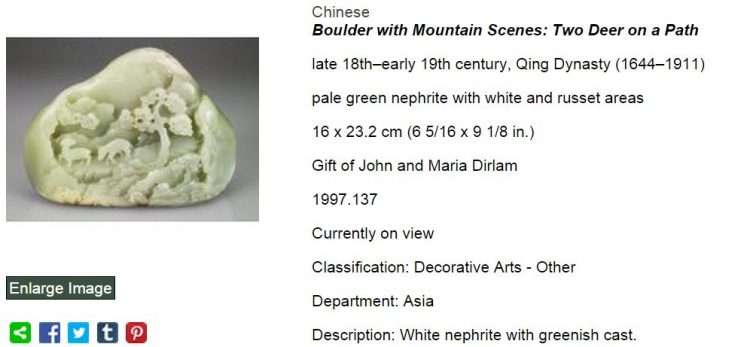
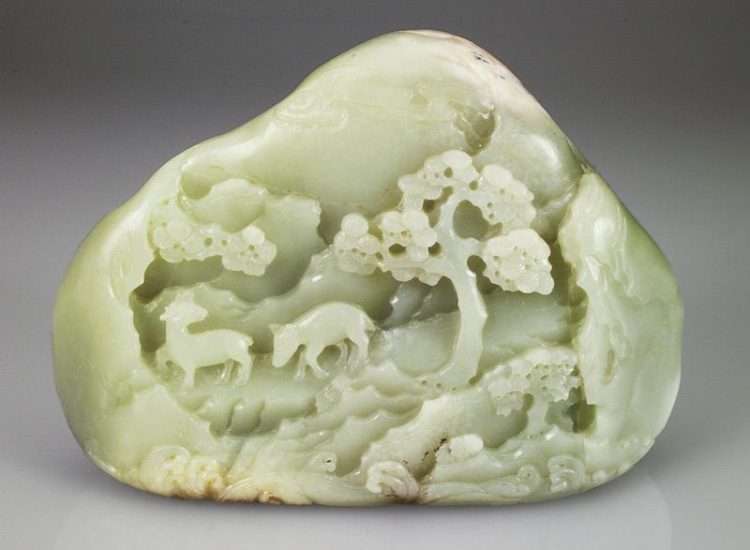
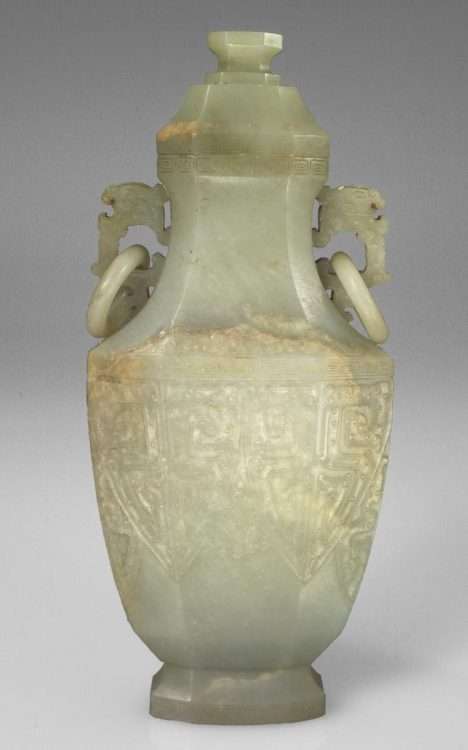
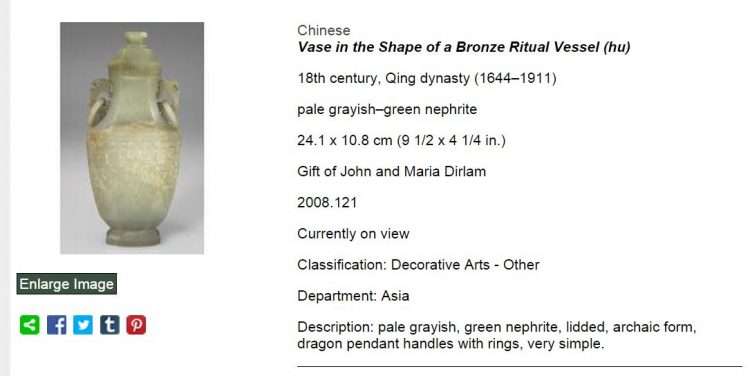
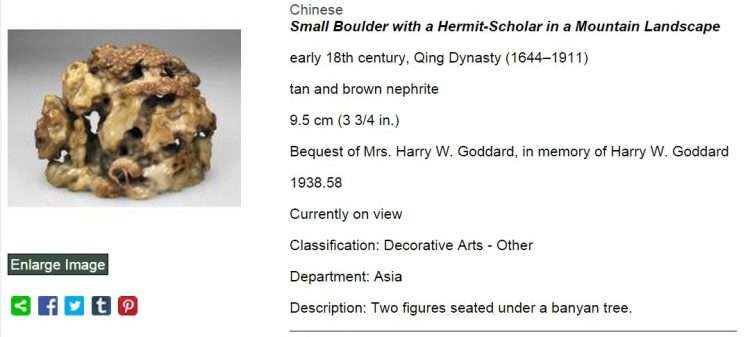
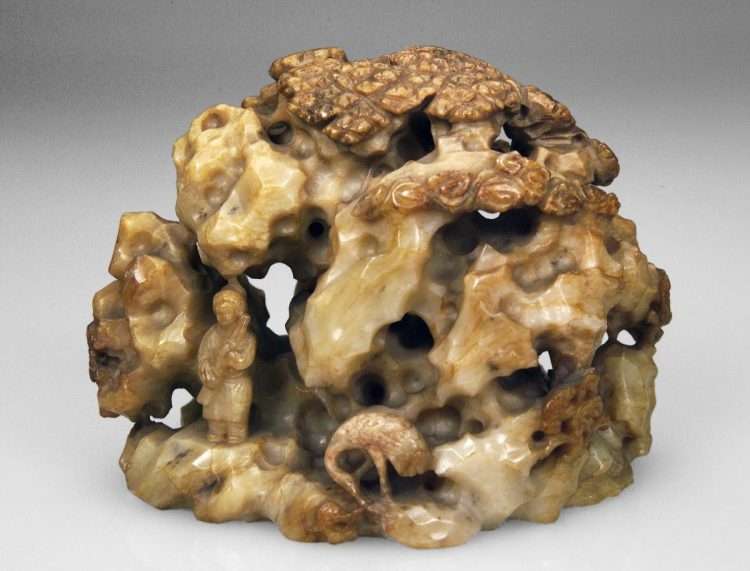
Leave a Reply